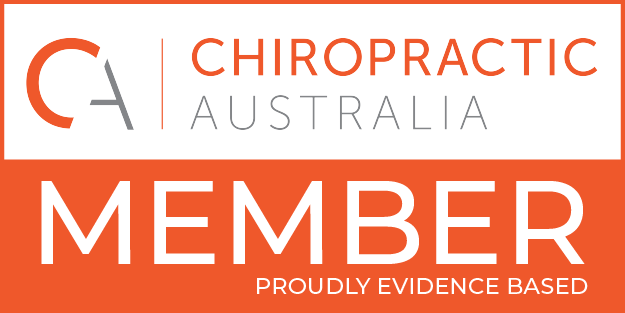Neck pain is a prevalent musculoskeletal disorder that can significantly affect your quality of life, limiting movement and causing discomfort. Chiropractic and manual therapy are common non-pharmacological treatments used to manage neck pain, but how effective are they? Backed by recent research, chiropractic adjustments, and manual therapy, are proving to be effective in alleviating pain and improving function. To learn more about the theory of how chiropractic adjustments reduce the pain signals from the brain then read this blog on the Pain Gate Theory. Here, we’ll explore the key insights, mechanisms, and best practices for chiropractic in treating neck pain.
How Effective is Chiropractic for Neck Pain?
Research shows that chiropractic offers mild to moderate improvements in both pain and function over a short-term period. Specifically, spinal manipulation helps relieve pain for those with acute, subacute, and chronic neck pain. A 2021 study also found that regular chiropractic care not only provides immediate relief but also offers sustained improvements in pain levels and mobility over time.
For those who are nervous about getting neck adjustments, or perhaps neck adjustments aren’t the best option due to other conditions, the good news is studies have also shown instrumental chiropractic manipulation – such as an activator – to be equally effective in reducing pain and restoring cervical function without causing adverse effects. This is a technique performed by a chiropractor which keeps the neck in a relatively neutral position while applying a high velocity low amplitude force through the joint via a handheld device. This makes it a safe and reliable option for many patients dealing with neck pain.
Manual Therapy vs. Exercise and Other Treatments
When compared to other treatments such as transcutaneous electrical nerve stimulation (TENS), manual therapy demonstrates superior results in improving cervical mobility. For patients dealing with acute neck pain, spinal manipulative therapy has also shown better results than medication in certain cases, providing a drug-free alternative for managing pain.
Furthermore, manual therapy often provides faster pain relief than therapeutic exercises alone. While exercises tend to reduce cervical disability more effectively in the long term, combining both manual therapy and exercise leads to better overall outcomes. Research consistently shows that this combination is superior in reducing both pain and disability compared to exercise alone, offering a more comprehensive approach to recovery.
Mechanisms of Pain Relief
The mechanisms behind manual therapy’s effectiveness in relieving neck pain are still being researched. Interestingly, its effects don’t seem to be mediated by conditioned pain modulation, which is often linked to other pain-relief treatments. However, studies indicate that combining manual therapy with therapeutic exercise can lead to structural brain changes, which may contribute to long-term improvements in neck pain. The pain-relieving effects of chiropractic spinal manipulation stem partly from the spinal cord’s pain inhibition mechanisms.
How often should you see your chiro when you experience neck pain?
Research suggests that patients with chronic neck pain who visit chiropractors more frequently tend to experience better improvements in pain and function. Visit frequency can vary widely and is influenced by your individual needs and the recommendations of your chiropractor.
Chiropractic, including spinal manipulation and instrumental techniques, offers a non-invasive and drug-free approach to managing neck pain. Research confirms its effectiveness in providing mild to moderate pain relief and improving neck function, especially when tailored to the individual. The pain-relieving effects are partly due to spinal cord mechanisms, and frequent visits tend to yield better outcomes.
For those dealing with chronic or acute neck pain, chiropractic is a viable and safe option. When integrated into broader healthcare systems, chiropractic can provide even greater benefits for patients. If you’re suffering from neck pain, consider consulting a licensed chiropractor to explore a personalised treatment plan that can help you regain mobility and reduce pain. Book online today!
References
- Bryans, R., Decina, P., Descarreaux, M., Duranleau, M., Marcoux, H., Potter, B., Ruegg, R. P., Shaw, L., Watkin, R., & White, E. (2014). Evidence-based guidelines for the chiropractic treatment of adults with neck pain. Journal of manipulative and physiological therapeutics, 37(1), 42–63. https://doi.org/10.1016/j.jmpt.2013.08.010
- Herman, P., Edgington, S., Sorbero, M., Hurwitz, E., Goertz, C., & Coulter, I. (2020). Visit Frequency and Outcomes for Patients Using Ongoing Chiropractic Care for Chronic Low-Back and Neck Pain: An Observational Longitudinal Study.. Pain physician, 24 1, E61-E74 . https://doi.org/10.36076/ppj.2021.24.e61-e74.
- Gevers-Montoro, C., Provencher, B., Descarreaux, M., Mues, A., & Piché, M. (2021). Neurophysiological mechanisms of chiropractic spinal manipulation for spine pain. European Journal of Pain, 25, 1429 – 1448. https://doi.org/10.1002/ejp.1773.
- Bernal-Utrera, C., González-Gerez, J., Anarte-Lazo, E., & Rodríguez-Blanco, C. (2020). Manual therapy versus therapeutic exercise in non-specific chronic neck pain: a randomized controlled trial. Trials, 21. https://doi.org/10.1186/s13063-020-04610-w.
- Luiz, T., Oliveira, M., Henrique, B., & Idogava, E. (2023). Effect of Instrumental Chiropractic Manipulation on The Neck: A Systematic Review. Medicine and Clinical Science. https://doi.org/10.33425/2690-5191.1075.







